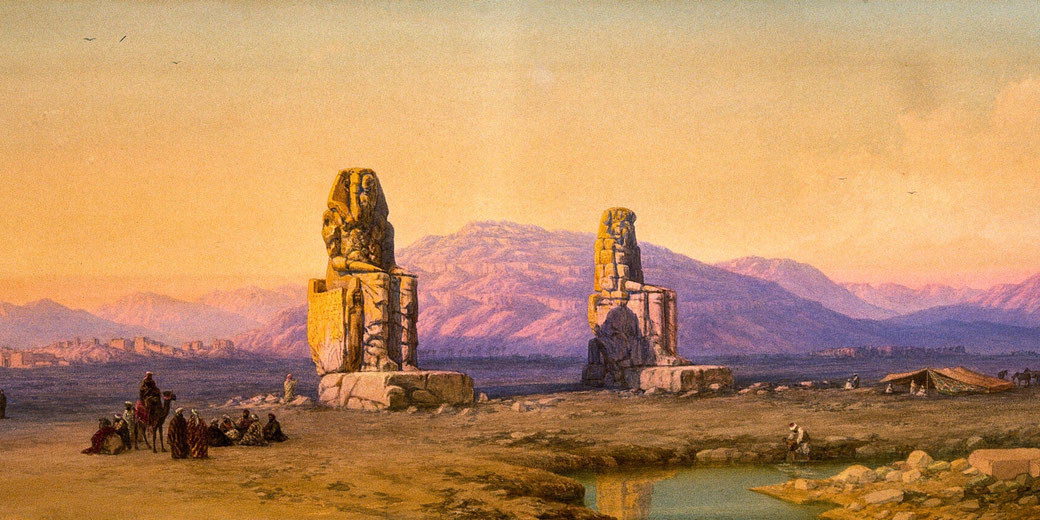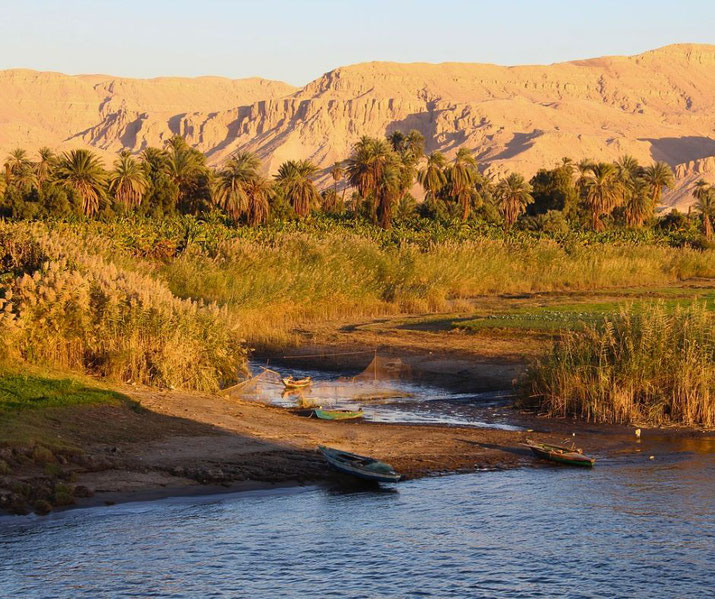How Egypt became the greatest superpower of the ancient world

When Egypt rose from the fertile banks of the Nile River over 5,100 years ago, its journey from a group of farming communities to an advanced, centralised state was truly remarkable.
Its kings built huge structures that still dominate the land, and its armies expanded its realm far beyond its borders. For thousands of years, Egypt thrived.
But what were the important factors that turned Egypt into an ancient superpower for such a long time while many other kingdoms rose and fell around it?
Egypt's geographical advantage
One factor that helped Egypt become an ancient superpower was its geography.
Nestled in the northeastern corner of Africa, Egypt was blessed with the Nile River, the longest river in the world.
Indeed, the Nile River was the lifeline of the civilisation because its regular yearly flooding deposited rich, fertile soil along its banks.
It created an environment suitable for farming and enabled early Egyptians to cultivate wheat and barley, providing a steady food supply that allowed large, settled communities to form.
The Nile was also an important route for travel and communication, and this encouraged the exchange of ideas, goods and resources.
The river’s natural supply of fish and water birds, along with papyrus reeds used to make paper, further helped Egypt’s impressive economic growth.
Besides the Nile, Egypt’s strategic position at the meeting point of Africa and Asia meant that it was a link between different regions, making it a centre for trade and cultural exchange.
The deserts on either side of the Nile Valley, though harsh and unwelcoming, were natural barriers and provided strong protection against foreign attacks.
Finally, the Mediterranean Sea to the north offered opportunities for sea trade and opened Egypt to the wider world.

Its rigid political structures
The political structure and administration of ancient Egypt proved to be crucial in its transformation into a superpower.
At the top of this structure was the divine, fully authoritative ruler known as the ‘pharaoh’.
Praised as the unifier of Upper and Lower Egypt around 3100 BCE, Narmer is traditionally thought to have been the first pharaoh; then, early rulers Djer, Den and Qa’a contributed to the development of administrative systems and state formation.
Divine kingship elevated the Pharaoh to supreme political, military and religious leadership.
The position as a divine king led Egyptians to see the Pharaoh as the only link between the gods and the people and to regard him as a god on earth.
Since Egyptians regarded him as divine, they believed that he preserved social order and stability throughout the kingdom; the Pharaoh’s authority was deemed unquestionable and absolute.
Below the Pharaoh was a highly organised bureaucracy that managed the state’s affairs and was divided into departments for agriculture, the treasury, public works and justice, among others.
Departments like these were overseen by high-level nobles or priest-officials, who reported directly to the Pharaoh.
A centralised administrative system like this allowed efficient management of resources.
The political system was supported by a clear legal framework dealing with a wide range of issues, from property rights and trade rules to criminal offences and family matters.
In the provinces of Egypt, called nomes, nomarchs supervised local affairs.
Such individuals often passed their authority from father to son or were personally appointed by the Pharaoh; they were responsible for collecting taxes, maintaining law and order and overseeing public works in their regions.
This system of provincial administration ensured that the Pharaoh’s authority was carried out across the large territory of Egypt.
Egypt's economic dominance
Ultimately, ancient Egypt’s economic success formed the foundation of its rise to power.
Surplus farm produce was stored in state granaries for use during years of poor harvest.
At the same time, taxes collected from the Egyptian people in the form of grain, livestock or labour funded public projects, including building pyramids and temples.
For example, the Great Pyramid of Giza was built by Pharaoh Khufu around 2560 BCE, using the manpower of thousands of peasant workers.
Such projects also boosted the economy by providing jobs and supporting different crafts, such as stone quarrying, woodworking and metalworking.
Besides, at its height during the New Kingdom, Egypt’s population, which was estimated to be between 3 million and 5 million people, allowed it to maintain large armies and complete major construction projects like those mentioned above.
In addition, Egypt established extensive trade networks that reached as far as Punt, Byblos and Mesopotamia and exchanged goods such as gold, papyrus and linen for luxury items like spices, incense, ivory and lapis lazuli.
Its vast military machinery
One of the most powerful factors in ancient Egypt’s control was its army. Under the command of the Pharaoh, it formed a formidable force that defended the kingdom from external threats and led its continued expansion.
The Egyptian military was especially well organised and was primarily divided into infantry, chariotry and archery units.
The infantry consisted of foot soldiers armed with spears, axes and shields. Later, during the New Kingdom period, chariots became an essential component of Egypt’s military machine, providing speed and strength on the battlefield.
Meanwhile, archers with bows and arrows still offered support from a distance.
In particular, pharaohs of the New Kingdom period (c. 1550 to 1070 BCE) expanded the military by establishing a standing army that remained active even in peacetime.
Subsequently, a partly professional force enabled Egypt to execute campaigns that continually extended its borders into Canaan and parts of the Levant.
Additionally, Nubia, located to the south of Egypt, was frequently targeted by Egyptian campaigns since it was one of the few sources of gold, ivory and slaves.
Several major battles were pivotal in Egypt’s military history, including the Battle of Megiddo around 1458 BCE, and the Battle of Kadesh around 1474 BCE, which was fought against the Hittites.
When not at war, the army also took part in non-military activities, such as quarrying, construction and transporting goods.
So, why did Egypt decline and fall?
The decline began after the death of Ramesses XI in 1070 BCE, when Egypt’s central authority weakened and the country fragmented into smaller regions governed by local rulers.
Gradual decentralisation led to reduced wealth and weakened the military. The final blow came with Egypt’s defeat by the forces of Alexander the Great in 332 BCE, which was the true end of native Egyptian rule.
The Ptolemaic Dynasty that was established by Alexander’s general Ptolemy governed Egypt for nearly three centuries.
Cleopatra VII was the last Ptolemaic ruler and tried to restore Egypt’s prosperity through alliances with Roman leaders Julius Caesar and Mark Antony.
Her primary aim was to maintain Egypt’s independence in the face of Roman expansion.
However, after her defeat and death in 30 BCE, Egypt became a province of the Roman Empire.
What do you need help with?
Download ready-to-use digital learning resources
Copyright © History Skills 2014-2025.
Contact via email
With the exception of links to external sites, some historical sources and extracts from specific publications, all content on this website is copyrighted by History Skills. This content may not be copied, republished or redistributed without written permission from the website creator. Please use the Contact page to obtain relevant permission.





